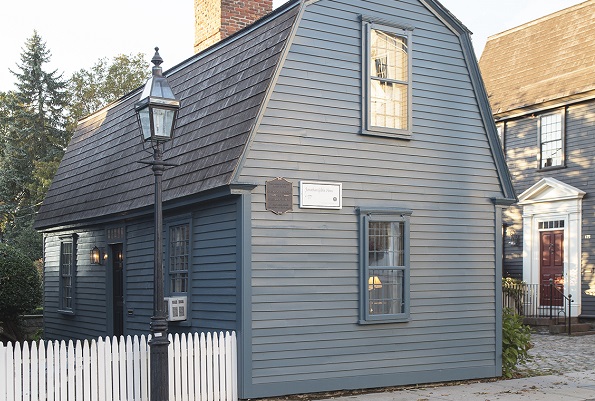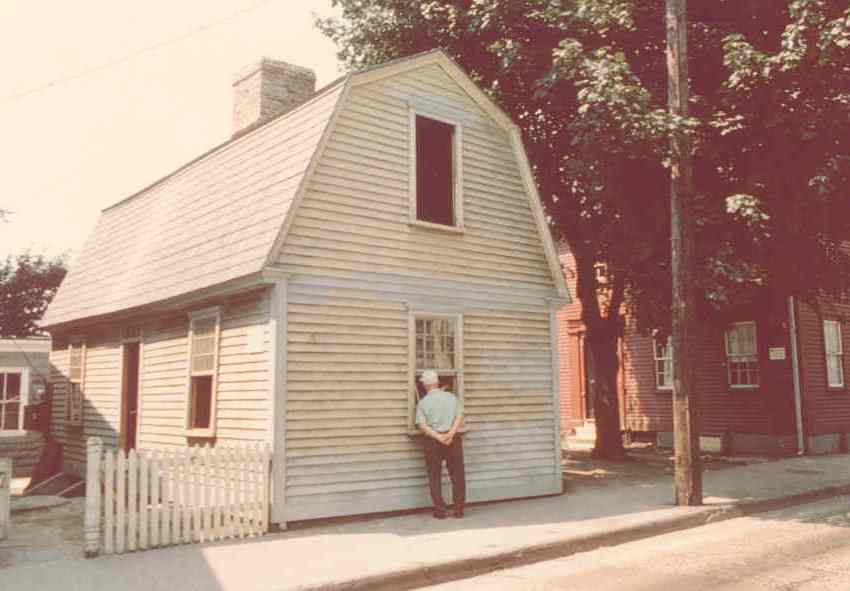Architectural story:
181 Spring Street Built was built ca.1771 and is a small example of the popular 18th-century, two-room cottage with a gambrel roof. The house is sited end-to-the-street with the entry fronting on the side yard. There is a center chimney with fireplaces in each first-floor room and two more for the second-floor chambers. A very tight, twisting staircase rises against the chimney wall, allowing for entry hall. There is a small one-story addition to the rear of the house that is of an early date, but not original. The house was purchased in 1969 and restored in 1970.
Restoration story:
The house was part of a three-building NRF purchase on Spring Street, including #175 (Samuel Bours House) . 181 Spring and 95 Spring, another example of a Newport vernacular cottage, were restored at the same time.
People story:
The house is named for Jonathan Gibbs, a housewright. He bought the land (originally part of Governor Benedict Arnold’s extensive seventeenth-century holdings in the area) from Ann Mercy Brewer in December of 1771. The British List of 1777 identifies “James Brattle and four others” as living in the house. Records show that he did not sell the house until 1782, indicating that he was the owner during Brattle’s tenancy.
There were several other owners between the time Gibbs sold the house in 1782 and when it was sold to John Bours (a merchant and slave trader) in 1813. The cottage, then numbered 175 Spring Street, remained with the Bours family until 1852.
In the late 19th and 20th centuries, the house became the home of many residents—including a bookkeeper, a painter, a fisherman, a clerk, and homemakers. We are looking forward to uncovering more about the people who lived and worked in this house.



